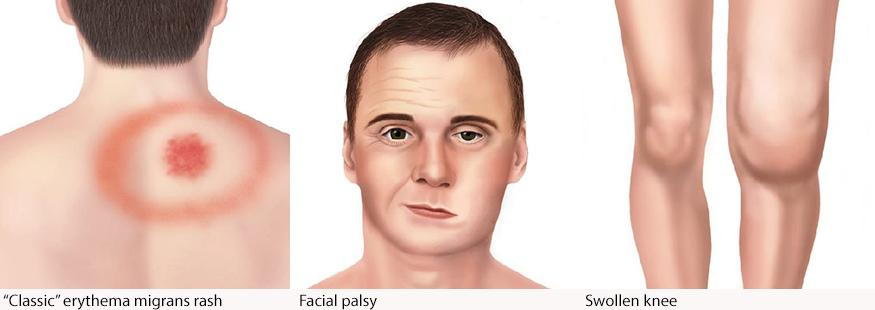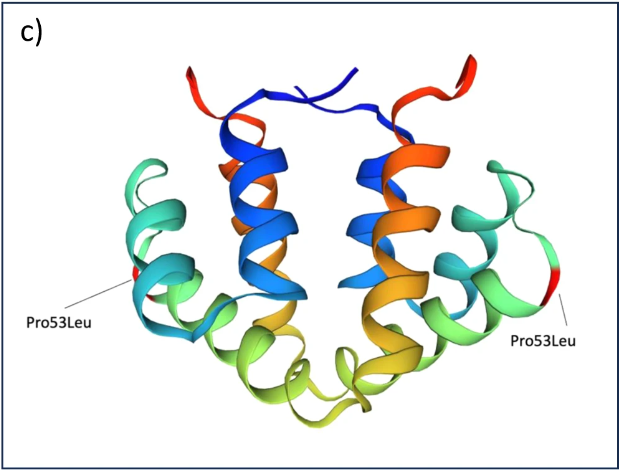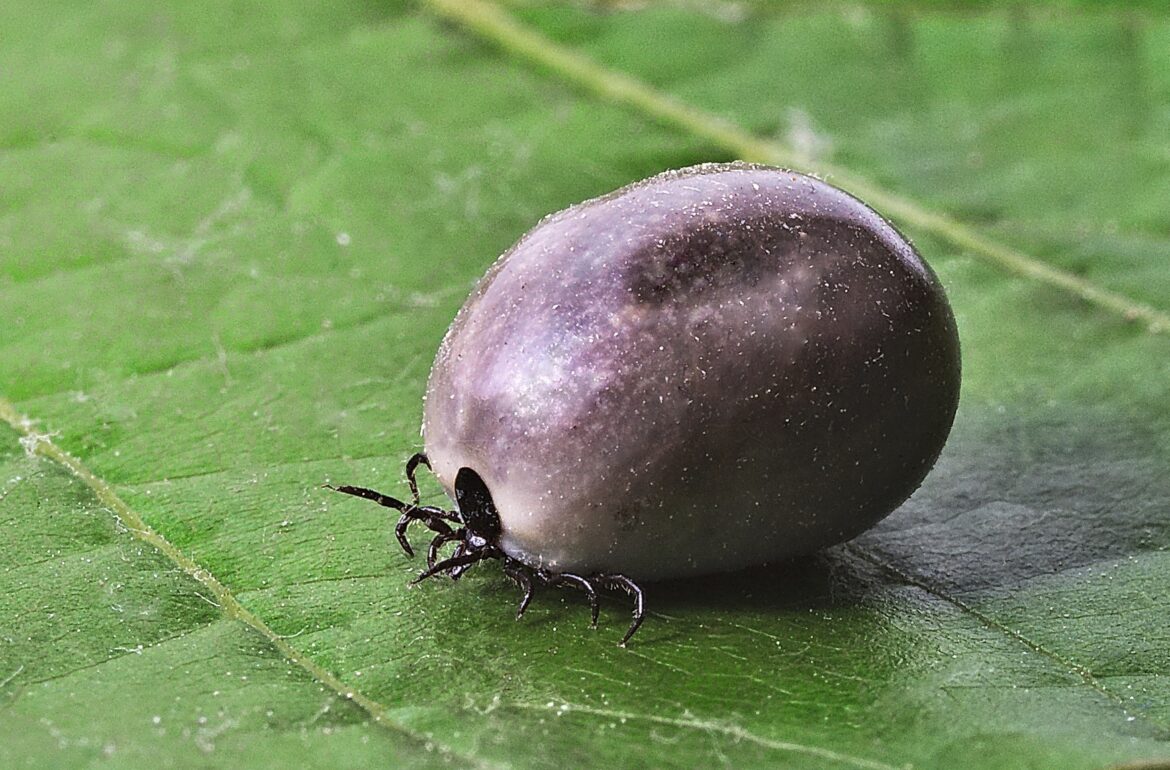Recent joint research by Estonian, Finnish and US scientists shows that genes are strongly tied to the risk of developing Lyme disease. In other words, genetics partly determines who is and is not at a higher risk of contracting this infectious disease from ticks.
Lyme disease is a bacterial disease that can only be prevented by avoiding ticks. Erik Abner is a functional genomics scientist and one of the authors of this research paper. He recalls that 20 years ago there was a vaccine for Lyme disease. However, American interest in it was lukewarm.
“The vaccine was actually effective but received an unreasonable amount of negative coverage,” Abner said. “At the time not much was known about the disease. As a result people were sceptical about getting the vaccination, and so the vaccine did not take off.” New vaccines are currently under development, and those interested might be able to get vaccinated against Lyme disease in a few years.
As of right now, if a person contracts Lyme disease, they are treated with antibiotics. In general, they work quite well. Erik Abner contracted Lyme disease himself a few years ago. He noted that detecting the disease is often difficult because symptoms are usually limited to fatigue, headaches and joint pain. Abner himself experienced the same symptoms. However, he did not realise it might be Lyme disease until he discovered bullseye rash (erythema migrans rash on the picture below) on his legs.

“After that I went to the doctor, but by that point I had been suffering for months with problems where I could not quite figure out what was wrong with me: whether I was tired, overworked or if I was dealing with something serious,” the scientist explained. The doctor, however, was able to determine a diagnosis and treatment quickly. The treatment usually spans two weeks, but after three days of antibiotics Abner already felt good as new. “For example, it was difficult for me to turn the key to unlock the door at home because my fingers were in so much pain, but the antibiotics helped very quickly,” he said.
The tick’s goal is not to remain attached to a person forever, it simply eats its fill and continues on to other hunting grounds. According to the scientist, it takes the tick a long time to eat its fill and people usually discover them before that happens. If a tick has attached itself to an uncomfortable spot, it quickly releases itself.
When it comes to tick-borne encephalitis, it does not matter how long the tick has been attached to a person, chances of getting infected are quite high. To contract Lyme disease, however, the tick has to be attached to a person for a while. On average, it takes about 24 hours to transfer a sufficient amount of bacteria. “The contact has to be somewhat longer for the bacteria to penetrate the skin and reach deeper,” Abner explained.
If a person has found a tick on their body, Abner recommends writing down the date and monitoring their health for two to three weeks. The easiest way to recognise Lyme disease is by the fact that a small circle will appear around the bite mark.
Detailed study
The scientists based their recent research on data from the Estonian Biobank and a similar databank from Finland. For the purpose of the study, scientists compared the genes of sick and healthy people. 200,000 gene samples were taken from the Biobank and inspected to see who of them had contracted Lyme disease. The second group consisted of people who had managed to avoid infection. The research group compared them and looked at where the genetic material was different.
Approximately 38 million genetic variants were compared for the research paper and among them, a mutation in the relatively unknown SCGB1D2 gene was detected. Abner believes that the mutation affects the gene’s normal behaviour or even breaks it down completely. Therefore, people with this gene variant are also at a higher risk of infection because they no longer have the protection provided by a well-functioning SCGB1D2 gene.

Those who had this genetic variation contracted Lyme disease 25-35% more frequently than the people who did not. “This means that one specific gene played a big part in determining whether a person would contract Lyme disease or not,” Abner said.
It should be mentioned here that according to Abner, the genetic mutation is very common: 13% of Estonians have inherited this mutation from both parents. In other words, if a person has inherited the mutation from their mother and father, then those people have a higher risk of contracting Lyme disease. That risk is around 35%.
If the mutation is inherited from one parent, then the likelihood of infection is approximately one in five. “These cases make up about 45-46% of Estonians and only about 41% of Estonians have not inherited the mutation from either side. In other words, more Estonians are in the higher risk group than in the lower,” the scientist said.
There’s a similar risk or even higher in other European and global populations! (1)
Erik Abner noted that this discovery has immediate benefits. Now, it should be considered whether this information could be used in the field of medicine. “People knowing if they have this genetic variation would be great. For example, the general practitioner could tell people which genetic variation they have and counsel them on how to proceed,” he said.
Abner himself knows that both his parents belong to the higher risk category, meaning that he belongs to the 13% of people who are most likely to contract the disease. “Next time I go to the forest I will pull my socks up over my pant legs so ticks can’t climb onto my body through them, and I will check my body for ticks much more thoroughly after leaving the forest,” Abner said, explaining how this new knowledge will change his behaviour.
Another option he has considered is related to the Biobank portal, which is in development. Perhaps this information could be used by them, too? According to Abner, legal matters could cause difficulties in this. “I would definitely like for this information to go somewhere – not just stay here in this one article, but for it to have a practical output in the future,” he said.
If people had this kind of information they could make more informed decisions. According to Abner, it is worth remembering that Lyme disease is on the rise in Estonia. According to the Estonian Health Board, there were 4520 cases of Lyme disease last year and 3075 cases the year before that. Every other tick in Lääne county carries the Borrelia bacteria and every third in Tartu county. “Meaning that the risk of infection is very high if a tick bites you,” said Abner. One of the main reasons for the rise in Lyme disease could be the fact that ticks are more actively as of late, and there are more of them. The reason for that is simple: the climate is getting warmer, and the winters are getting shorter.
Potential treatment
According to Abner, the gene SCGB1D2 is known to be expressed very strongly in the skin. “This raises the question, what is it doing in the skin? As of right now we have not identified any of its functions,” he said. It can be speculated that the gene evolved to protect humans from bacteria. Lyme disease is not a new disease, it is thousands of years old. “There are archaeological examples of people contracting Lyme disease. We can speculate that this gene evolved specifically to protect us from Lyme disease,” Abner said.
An associate from the US has proposed the idea of developing a skin cream based on this information. In the case of a tick bite, the cream could be applied to the bite, and it would inhibit the growth of the bacteria.
Abner himself thought maybe the cream could be administered through band-aids, drawing parallels with nicotine patches. It would contain a considerable amount of the necessary protein. “This would allow for the protein to be administered to the top layers of skin, which would hinder the growth of the bacteria,” he explained. The next steps should be figuring out how effective these approaches would be. The US associates are already looking into this and will be conducting experiments on mice to determine whether this protein can really hinder the growth of the bacteria.
(1) Researcher Erik Abner’s comment:
East-Asian 95.95%
Korean 95.29%
South-Asian 82.68%
Admixed American 77.64%
Finnish 64.79%
Estonian 58.23%
Swedish 57.20%
North-western European 55.26%
Ashkenazi Jewish 54.76%
Southern European 53.46%
African American 40.18%
( calculations based on data from gnomAD database:
https://gnomad.broadinstitute.org/variant/11-62010863-C-T?dataset=gnomad_r2_1 )
This article was originally published on the the Estonian Public Broadcasting online news portal. Author: Sandra Saar.
READ MORE from our webpage about how Estonian researchers fight Lyme disease with local herbs!
 Back
Back



